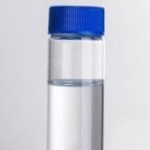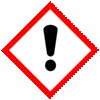Benzyl Alcohol SDS of Suppliers Exporters, Manufacturers
Benzyl Alcohol
CAS Number: 100-51-6 USP NF Reagent BP Ph Eur Suppliers Exporters, Manufacturers

Please visit Main Page of Benzyl Alcohol USP NF Reagent BP Ph Eur Manufacturers.
Benzyl Alcohol SDS, Safety Data Sheet
MSDS Sheet 07-May-22
1. Product Identification
Product Name & Other Names: Benzyl Alcohol or Benzenecarbinol; benzenemethanol or alpha-hydroxytoluene or Phenylmethyl alcohol or Phenyl carbinol.
CAS No.: 100-51-6
EINECS EC-No.: 202-859-9
Relevant uses and uses advised against (if any): Industrial use only.
Supplier: As per letterhead.
2. Hazards Identification
GHS, Globally Harmonized System Classification in accordance with 29 CFR 1910
Classification according to Regulation (EC) No 1272/2008
Acute toxicity, Oral Category 4, H302
Acute toxicity, dermal Category 4, H312
Skin corrosion/irritation Category 2, H315
Acute toxicity, inhalation Category 4, H332
Hazardous to the aquatic environment, acute hazard Category 2, H401
Labeling according to Regulation (EC) No 1272/2008
GHS Label Elements  Irritant |
Signal Words: Warning
Hazard statements:
H302: Harmful if swallowed.
H312: Harmful in contact with skin.
H315: Causes skin irritation.
H332: Harmful if inhaled.
H401: Toxic to aquatic life.
Precautionary statements:
P261 Avoid breathing dust/fume/gas/mist/vapors/spray.
P262 Do not get in eyes, on skin, or on clothing.
P264 Wash skin thoroughly after handling.
P270 Do not eat, drink, or smoke when using this product.
P271 Use only outdoors or in a well-ventilated area.
P273 Avoid release to the environment.
P280 Wear protective gloves/protective clothing/eye protection/face protection.
P314 Get Medical advice/attention if you feel unwell.
P330 Rinse mouth.
P301+P312 IF SWALLOWED: Call a POISON CENTER or doctor/physician if you feel unwell.
P302+352 IF ON SKIN: Wash with soap and water.
P332+313 If skin irritation occurs: Get medical advice/attention.
P304+340 IF INHALED: Remove victim to fresh air and keep at rest in a position comfortable for breathing.
P305+P351+P338 IF IN EYES: Rinse cautiously with water for several minutes. Remove contact lenses, if present and easy to do. Continue rinsing.
P337+P313 If eye irritation persists: Get medical advice/ attention.
P330 Rinse mouth.
3. Composition/Information on Ingredients
Product Name & Other Names: Benzyl Alcohol or Benzenecarbinol; benzenemethanol or alpha-hydroxytoluene or Phenylmethyl alcohol or Phenyl carbinol.
CAS No.: 100-51-6
EINECS EC-No.: 202-859-9
4. First Aid Measures
Always seek medical attention after first aid measures are provided.
Inhalation: If inhaled, remove to fresh air. If not breathing, give artificial respiration. If breathing is difficult, give oxygen. Get medical attention.
Ingestion: Give substantial amounts of water to drink. Never give anything by mouth to an unconscious person. Get medical attention.
Skin Contact: Immediately flush skin with plenty of water for at least 15 minutes. Remove contaminated clothing and shoes. Get medical attention. Wash clothing before reuse. Thoroughly clean shoes before reuse.
Eye Contact: Check for and remove any contact lenses. Immediately flush eyes with running water for at least 15 minutes, keeping eyelids open. Cold water may be used. Get medical attention.
5. Fire Fighting Measures
Fire: Flash point: 93C (199F)
Auto ignition temperature: 436C (817F). Combustible. High heat or direct flame is necessary to cause ignition.
Fire Extinguishing Media: Dry chemical, foam, or carbon dioxide. Do not use a solid stream of water since the stream will scatter and spread the fire. Water spray may be used to keep fire exposed containers cool.
Extinguishing Media Not recommended: Avoid using solid water jet as it may scatter the fire.
Special Information: In the event of a fire, wear full protective clothing and NIOSH-approved self-contained breathing apparatus with full face piece operated in the pressure demand or other positive pressure mode. At elevated temperatures under fire conditions, it may produce toxic or irritating fumes. Fire-extinguishing work is done from the windward and the suitable fire-extinguishing method according to the surrounding situation is used.
6. Accidental Release Measures
Personal precautions, protective equipment, and emergency procedures: Avoid breathing dust/fumes/gas/mist/vapors/spray. Use individual protective equipment (waterproof boots, suitable protective clothing, safety glasses, etc.). Prevent any contact with hot surfaces. Do not approach facing the wind.
Environmental precautions: Do not let the product enter drains, soil, or water sources.
Methods and materials used for containment cleanup procedures and Storage: Benzyl Alcohol is Combustible material. Keep away from heat. Keep away from sources of ignition. Stop leak if without risk. Soak up with inert absorbent material and dispose of as hazardous waste. Keep in suitable, closed containers for disposal. Finish cleaning by spreading water on the contaminated surface and dispose as per law.
7. Handling and Storage
Precautions for safe handling: Apply according to good manufacturing and industrial hygiene practices. Ensure proper ventilation. Wash thoroughly after handling. Do not drink, eat, or smoke while handling. Avoid contact with skin, eyes, and clothing. Minimize dust generation. Avoid breathing dust/fumes/gas/mist/vapors/spray. Use individual protective equipment (waterproof boots, suitable protective clothing, safety glasses, etc.).
Conditions for safe storage, including any incompatibilities: Store in cool, dry, and ventilated area away from heat sources and protected from sunlight in tightly closed original container. Keep air contact to a minimum. Do not leave the material container open. Store protected from heat, sparks and ignition sources and incompatible materials. Do not store with incompatible materials like acids, oxidizing agents, and aluminum. Outside or detached storage is preferred. Inside storage should be in a standard flammable liquid storage room or cabinet. Separate from oxidizing materials. Storage and use areas should be No Smoking areas.
8. Exposure Controls/Personal Protection
Airborne Exposure Limits: AIHA Workplace Environmental Exposure Level (WEEL):10 ppm, 8-hour, TWA
Ventilation System: A system of local and/or general exhaust is recommended to keep employee exposures as low as possible.
Personal Respirators (NIOSH Approved): For conditions of use where exposure to the substance is apparent and engineering controls are not feasible, consult an industrial hygienist.
Skin Protection: Wear impervious protective clothing, including boots, gloves, lab coat, apron, or coveralls, as appropriate, to prevent skin contact.
Eye Protection: Use chemical safety goggles and/or a full-face shield where splashing is possible. Maintain eye wash fountain and quick-drench facilities in work area.
Other Control Measures: Maintain good housekeeping in work area. Handle in accordance with good industrial hygiene and safety practice.
9. Physical and Chemical Properties
Appearance: Clear, colorless liquid.
Odor: Faint aromatic odor.
Odor threshold: Not available.
pH: No data found.
Relative density: 1.05
Boiling Point: 205C (401F)
Melting Point: -15C (5F)
Flash point: No data found.
Auto-ignition temperature: No data found.
Decomposition temperature: No data found.
Upper/lower flammability or explosive limits: No data found.
Vapor Density (Air=1): 3.72
Vapor Pressure (mm Hg): 0.15 @ 25C (77F)
Evaporation Rate (BuAc=1): 1.8 (Ether = 1)
Flammability (solid, gas): No data found.
Partition coefficient: n-octanol/water: No data found.
Solubility: 1g/25ml water @ 17C
Viscosity: No data found.
Molecular Weight: 108.14
Chemical Formula: C6H5CH2OH
10. Stability and Reactivity
Stability: Stable under ordinary conditions of use and storage. Undergoes slow oxidation in the presence of air or oxygen to form benzaldehyde and benzoic acid.
Hazardous Decomposition Products: Carbon dioxide and carbon monoxide may form when heated to decomposition.
Hazardous Polymerization: When heated past 100C, Benzyl Alcohol containing hydrogen bromide and dissolved iron may polymerize with a rapid increase in temperature.
Incompatibilities: Acids, oxidizing agents, and aluminum. Will attack some plastics.
Conditions to Avoid: Heat, flames, ignition sources and incompatibles.
11. Toxicological Information
Oral rat LD50: 1230 mg/kg
LD50 Oral - Rat - male - 1.620 mg/kg
Skin rabbit LD50: 2000 mg/kg; irritation, skin rabbit, standard Draize, 100 mg/24-hour, open, moderate.
Mutagenic Effects: Mutagenic for bacteria and/or yeast.
Teratogenic Effects: No data found.
Developmental Toxicity: No data found.
Carcinogenicity: No component of this product present at levels greater than or equal to 0.1% is identified as probable, possible or confirmed human carcinogen by IARC.
12. Ecological Information
Results of PBT and vPvB assessment: This substance/mixture contains no components considered to be either persistent, bioaccumulative and toxic (PBT), or very persistent and very bioaccumulative (vPvB) at levels of 0.1% or higher.
Environmental Fate: When released into the soil, this material is expected to leach into groundwater. When released into the soil, this material may evaporate to a moderate extent. When released into the soil, this material may biodegrade to a moderate extent. When released into water, this material is not expected to evaporate significantly. When released into water, this material may biodegrade to a moderate extent. This material has an estimated bio concentration factor (BCF) of less than 100. This material is not expected to significantly bio accumulate. When released into the air, this material is expected to be readily degraded by reaction with photo chemically produced hydroxyl radicals. When released into the air, this material is expected to have a half-life between 1 and 10 days. When released into the air, this material may be removed from the atmosphere to a moderate extent by wet deposition.
Toxicity to fish LC50 - Lepomis macrochirus (Bluegill): 10 mg/l - 96 h
LC50 - Pimephales promelas (fathead minnow): 460 mg/l - 96 h
Toxicity to daphnia and other aquatic invertebrates:
EC50 - Daphnia magna (Water flea) - 55 mg/l - 24 h
- Daphnia magna (Water flea) - 230 mg/l - 48 h
Environmental Toxicity: The LC50/96-hour values for fish are from 10 to over 100 mg/l. This material may be toxic to aquatic life.
13. Disposal Considerations
Whatever cannot be saved for recovery or recycling should be managed in an appropriate and approved waste disposal facility.
14. Transport Information
DOT USA, TDG Canada & ADR/RID Europe: Not controlled goods.
IMDG/IMO: Not controlled goods.
IATA/ICAO: Not controlled goods.
15. Regulatory Information
USA:
SARA 311/312: See section 2.
US California Proposition 65: No ingredient regulated by CA Prop 65 present.
16. Other Information
DISCLAIMER: The information and recommendations set forth herein are presented in good faith and believed correct as of the date hereof. It is compiled from various sources, and it is not necessarily all inclusive nor fully adequate in every circumstance. In addition, these suggestions should not be confused with nor followed in violation of applicable laws, regulations, rules, or insurance requirements applicable. This MSDS sheet is intended only as a guide to the appropriate precautionary handling of the material by a professionally trained person using this product. Individuals receiving the information must exercise their independent judgment in determining its appropriateness for a particular purpose.
Please visit Technical Data Sheet of Benzyl Alcohol USP NF Reagent BP Ph Eur Suppliers.
Benzyl Alcohol CAS Number 100-51-6 & Benzyl Benzoate CAS Number 120-51-4 Supplier Exporter, Manufacturer:
Annie Chemie P Ltd
Mumbai 4000010, INDIA
With Agents and offices in UAE, USA, Europe.
e-mail: info@anniechemie.com
Copyright and Usual Disclaimer is Applicable.
May 29, 2025
Exporters to USA, Canada, UK, Europe, UAE, Nigeria, Algeria, Turkey, Mexico, Brazil, Chile, Argentina, Australia, Dubai etc.
Perfection is made up of small things and that is a big thing.
